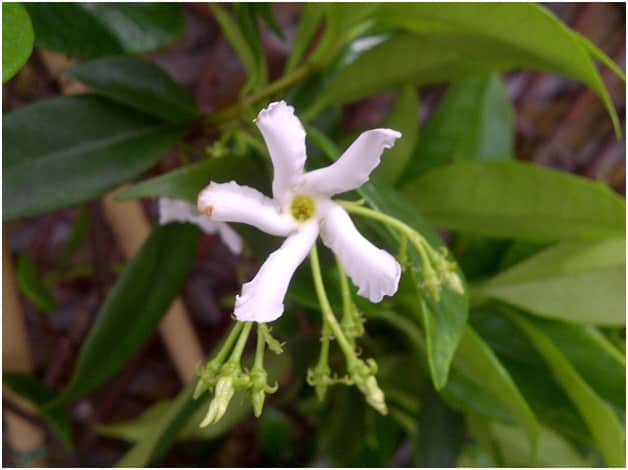Jasmine is a plant that offers a little bit of everything. Its grace, elegance and incredible fragrance make it a very popular flowering plant. Jasmine is best on the outside most of the time, but that does not mean it cannot be a decorative element from the inside. However, there are some tricks to remember about indoor jasmine plants.
Choose the right jasmine plant
Most indoor jasmine plants grow around a ring or trellis because jasmine is a vine, unlike other houseplants that grow upwards. However, not all jasmine is the same, and among the many varieties of this exotic plant, only a few will flourish easily if grown or kept at home. Fortunately, those that flourish need the same care as all the others and do not need special requirements.
Here are our suggestions for your indoor jasmine plant:
- Jasminepolyanthus – Also known as white or pink jasmine, it is a plant that grows fast and has an intense odor. The only thing to keep in mind is that it is a plant that really likes to climb – for example, it can be grown to cover an outside wall – so make sure you prune it more than the others.
- Jasminesembac – Often known as Arabian jasmine, it is a variety with an intense fragrance that is used to make tea, but also perfectly suited to growing indoors because it is a plant with a tendency to climb lower than white jasmine.
- Jasmineofficinal – Known as common jasmine or jasmine of poets and another excellent choice as an indoor plant as it produces a huge amount of flowers.
- Stephanotis floribunda – Although not strictly part of the jasmine family, it is sometimes known as Madagascar’s jasmine due to its dazzling white bloom and exotic scent.
Position and compound for repotting
Jasmine can be grown in a normal vase, or if you want a particular effect, in a hanging basket, in normal soil or with a mixture of bark. These plants love light (at least 6 hours a day) and should receive as much as possible. The room in which it is located should be well lit so that it receives a lot of light during the spring and summer months.
Furthermore, it is important not to allow it to dry out too much during the winter due to central heating and radiators. Placing it in a position where the air is circulating should prevent unwanted effects due to heating or air conditioning.
Water and nourishment
Jasmine likes moist but not too much. It needs regular watering, but you should always let it dry before the next irrigation: the soil must be wet but not wet. As with many other plants, jasmine should not be watered frequently during the winter months.
There is no need to fertilize a jasmine plant too often. If you prefer to do so, try using a diluted indoor plant fertilizer and use it only during the growing season in spring and summer. Too much fertilizer could force the plant and flowers for a longer period than necessary.
Do not let it grow too fast
Repotting a jasmine plant is often necessary as it grows in size and gains maturity. But this must be done sparingly or grow uncontrollably. Remember that jasmine is a climbing plant, so it is better to let it grow at its own pace.
Try repotting it gradually into a larger pot once a year during the spring to meet its natural growth cycle. An excellent idea is also to prune the plant at the end of the growing season to help it maintain its original shape.
Jasmine has the wild soul, but with some precautions it can be tamed. The result is really worth it as you can appreciate its natural beauty, its abundant foliage and fragrant fragrance throughout the year.
Add a touch of freshness to your home or surprise with class with an exotic plant delivered directly to the address of a special person with our rose flower delivery service. Celebrate with a touch of green extra with some fantastic plants.










